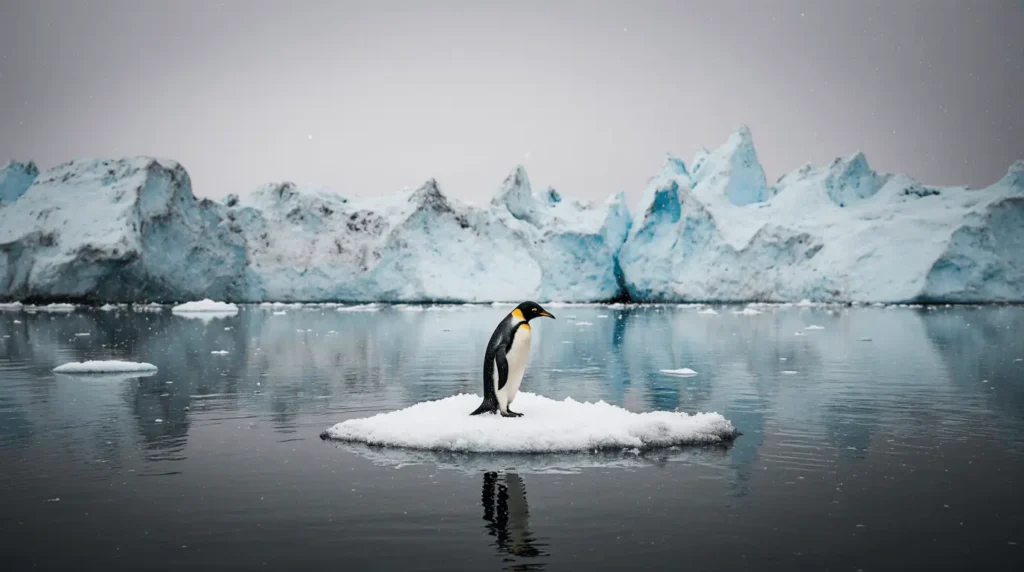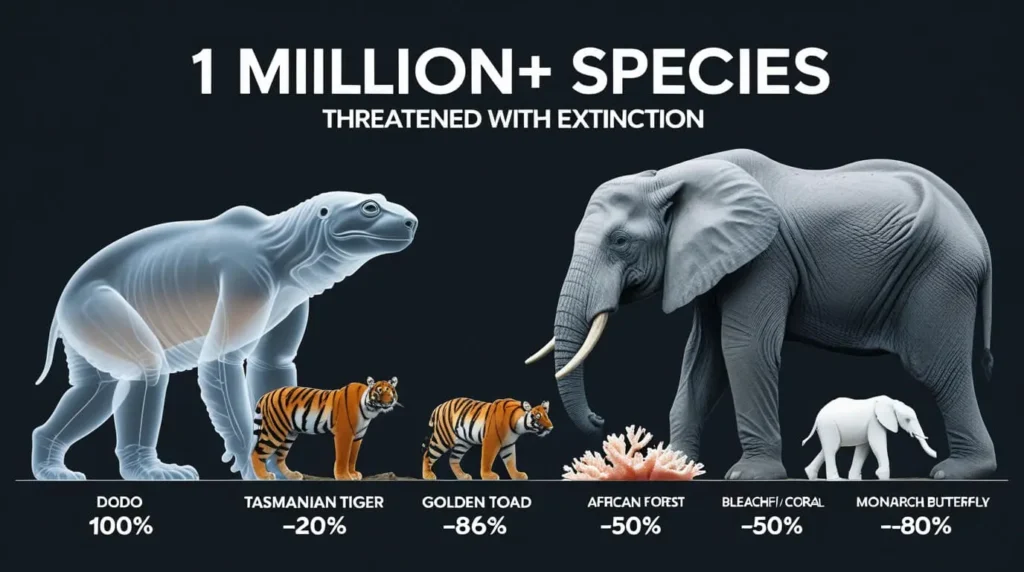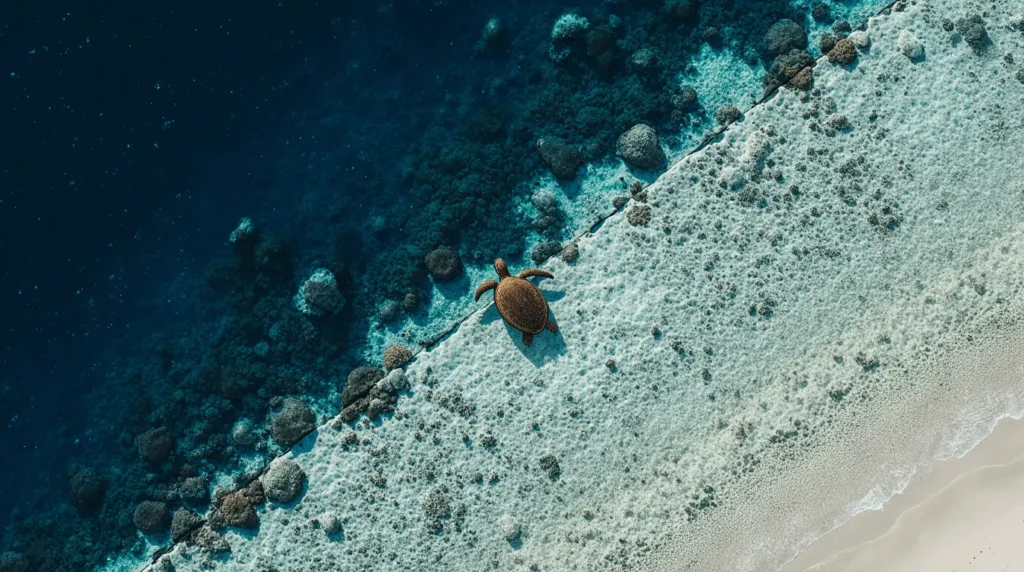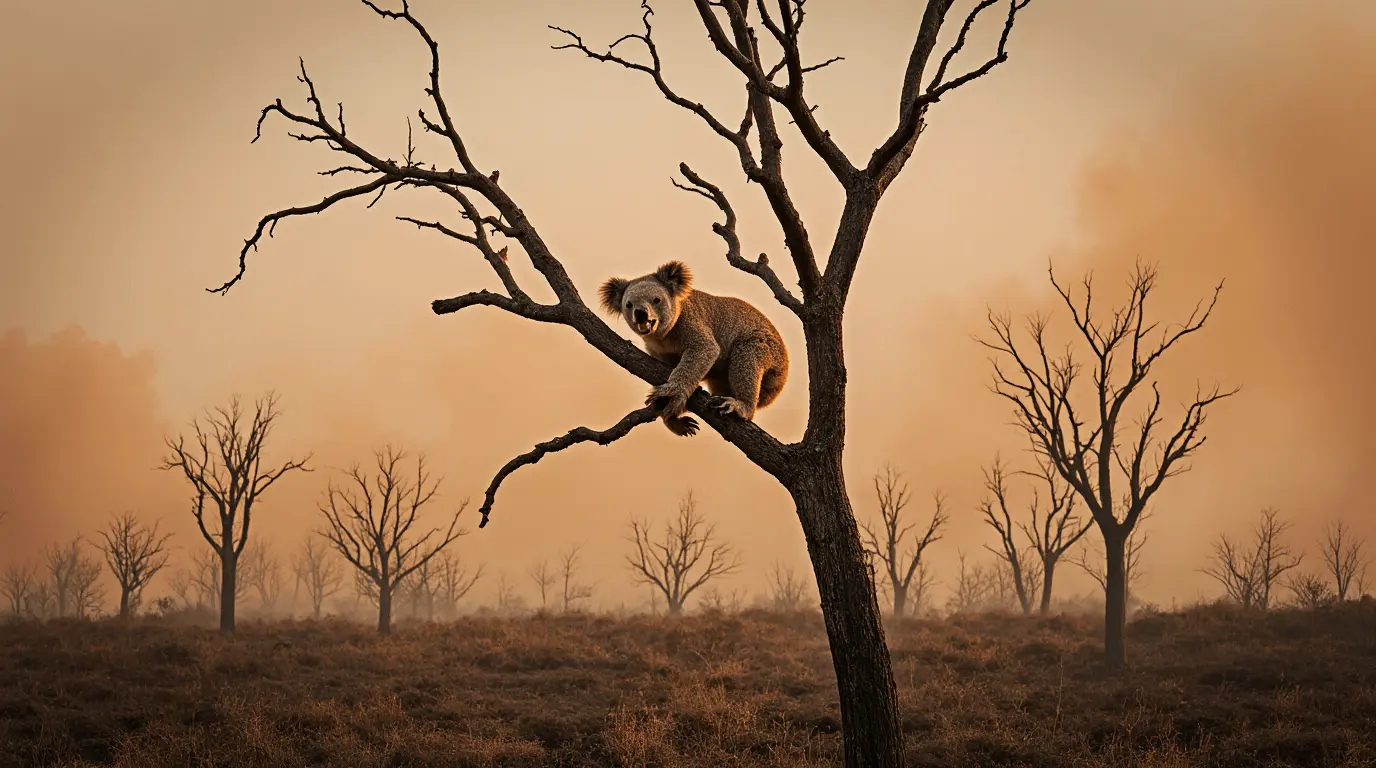⚡ Quick Answer: Environmental and biodiversity impacts of climate change include habitat loss through rising temperatures, extinction of species 100-1,000 times greater than the natural rate, acidification of oceans threatening marine life, and disrupted ecosystem interactions. These impacts amount to $125-145 trillion annually in lost ecosystem services worldwide. Jump to: Climate Drivers | Economic Impacts of Biodiversity Loss | Solutions
Reading time: 7 minutes
Climate change is one of the most direct threats to life on Earth. As global temperatures rise and weather patterns are altered, ecosystems across the globe face unprecedented pressures that threaten their stability and very existence.
Understanding the impact of climate change on ecosystems and biodiversity is necessary to create effective conservation plans and protect the natural systems that support all life, including human civilization.
Table of Contents
What Are the Main Climate Drivers Affecting Ecosystems?

The impact of climate change on ecosystems and biodiversity is manifested through many interrelated environmental changes that biologically remap the functioning of natural systems.
Rising Global Temperatures
Temperature increases are redefining habitats across the globe, prompting species to react by adapting, shifting, or going extinct.
Key temperature impacts:
- US land animals shifting northward 3.8 miles every decade
- Seaspecies shifting ranges more than 17 miles every decade
- Polar ice conditions disappearing at a rapid rate
- Alpine species stranded on mountain peaks with nowhere to move
Species at highest risk:
- Polar bears losing Arctic sea ice cover
- Mountain-dwelling species with limited elevation options
- Cold-water fish species under thermal stress
- Corals and other organisms undergoing heat-induced bleaching
Extreme Weather Events
Climate change increases the frequency and intensity of extreme weather events that devastate ecosystems in hours or days.
Recent Extreme Weather Examples:
| Event Type | Example | Ecosystem Impact |
|---|---|---|
| Wildfires | 2019-2020 Australian bushfires | 19 million hectares burned, 3+ billion animals lost |
| Droughts | Western US mega-drought | Freshwater ecosystem collapse, vegetation die-off |
| Hurricanes | Intensifying tropical storms | Mangrove and coral reef destruction |
| Floods | Increased severe flooding | Soil erosion, water quality degradation |
Long-term consequences:
- ✓ Altered soil composition and nutrient cycles
- ✓ Impaired ecosystem regeneration capacity
- ✓ Habitat fragmentation lasting decades
- ✓ Cascading effects through food webs
Ocean Warming and Acidification
Marine environments face a triple threat that demonstrates the severe impact of climate change on ecosystems and biodiversity in aquatic systems.
Ocean changes:
- 90% of excess heat absorbed by oceans
- 30% of CO₂ emissions absorbed, causing acidification
- Expanding oxygen-minimum “dead zones”
- Widespread coral bleaching events
Marine ecosystem threats:
- Shell-forming organisms struggling to build structures
- Coral reefs dying from sustained high temperatures
- Plankton populations declining at food web foundations
- Commercial fish species shifting to new regions
How Severe Is the Biodiversity Loss Crisis?

The impact of climate change on ecosystems and biodiversity is most visible in accelerating species loss and population declines worldwide.
Extinction Rates Accelerating
Current species extinction rates are 100 to 1,000 times higher than natural background rates, creating what scientists call the “sixth mass extinction.”
Species Most Vulnerable to Climate Change:
| Category | Characteristics | Examples |
|---|---|---|
| Specialized species | Narrow habitat requirements | Panda bears, orchid species |
| Polar species | Dependent on ice/cold | Polar bears, Arctic foxes, penguins |
| Slow reproducers | Cannot adapt quickly | Sea turtles, elephants, large whales |
| Island endemics | Limited range, nowhere to migrate | Hawaiian honeycreepers, Galápagos species |
| Coral reef inhabitants | Dependent on sensitive ecosystems | Clownfish, reef sharks, sea anemones |
Phenological Mismatches
One of the most insidious aspects of the impact of climate change on ecosystems and biodiversity involves disrupted timing of seasonal biological events.
What are phenological mismatches? Phenological mismatches occur when climate change causes the timing of ecological events to fall out of sync—like flowers blooming before pollinators emerge, or migratory birds arriving after their insect prey has peaked.
Examples of timing disruptions:
- 🐦 Migratory birds arriving at breeding grounds to find insect prey already gone
- 🌸 Plants flowering before their pollinators become active
- 🐟 Fish spawning out of sync with food availability for larvae
- 🦋 Butterfly emergence misaligned with host plant availability
Consequences:
- Reproductive failures across multiple species
- Population declines even when habitats remain intact
- Disrupted food web relationships
- Reduced pollination success for wild and crop plants
Economic Impacts of Biodiversity Loss
The impact of climate change on ecosystems and biodiversity carries massive economic consequences affecting human livelihoods globally.
Global Economic Costs:
| Sector | Annual Impact | Cause |
|---|---|---|
| Ecosystem Services | $125-145 trillion total value at risk | Overall biodiversity decline |
| Fisheries | Hundreds of millions lost by 2100 | Range shifts, ocean acidification |
| Tourism | $140 billion from coral damage alone | Reef bleaching and death |
| Agriculture | Billions in reduced yields | Pollinator decline, soil degradation |
| Disaster costs | Increasing exponentially | Loss of natural buffers (mangroves, wetlands) |
Communities most affected:
- Indigenous peoples dependent on traditional ecosystems
- Coastal communities relying on fisheries
- Small-island nations facing habitat loss
- Rural agricultural communities
- Tourism-dependent regions
How Do Climate Impacts Cascade Through Ecosystems?

The impact of climate change on ecosystems and biodiversity rarely affects single species in isolation—instead, changes cascade through interconnected ecological networks.
Trophic Cascades
When climate change affects one part of a food web, the impacts ripple through multiple levels.
Example cascade:
- Ocean warming reduces plankton populations
- Small fish lose primary food source
- Larger predator fish decline
- Marine mammals and seabirds struggle to find food
- Commercial fisheries collapse
- Human communities lose food security
Types of cascading effects:
- ⚡ Predator-prey imbalances
- ⚡ Foundation species collapse (like plankton or key pollinators)
- ⚡ Ecosystem regime shifts to alternative stable states
- ⚡ Biomass redistribution across regions
Threatened Ecosystem Services
Natural systems provide essential services that the impact of climate change on ecosystems and biodiversity is systematically undermining.
Critical Ecosystem Services at Risk:
Provisioning Services:
- Fresh water supply
- Food production (wild-caught and farmed)
- Timber and fiber
- Medicinal resources
Regulating Services:
- Carbon sequestration and climate regulation
- Flood control and water filtration
- Disease regulation
- Pollination of crops and wild plants
Cultural Services:
- Recreation and tourism
- Aesthetic and spiritual value
- Educational opportunities
- Cultural heritage
Supporting Services:
- Soil formation and nutrient cycling
- Primary production (plant growth)
- Oxygen production
- Habitat provision
What Regions Face the Greatest Impact?
The impact of climate change on ecosystems and biodiversity varies by region, with some areas experiencing particularly severe consequences.
Most Vulnerable Ecosystems:
| Ecosystem Type | Vulnerability Level | Primary Threats |
|---|---|---|
| Coral Reefs | Critical | Bleaching, acidification, warming |
| Arctic Tundra | Critical | Rapid warming, permafrost thaw, ice loss |
| Mountain Ecosystems | Very High | Temperature rise, reduced snowpack |
| Coastal Wetlands | Very High | Sea-level rise, saltwater intrusion |
| Tropical Rainforests | High | Drought, fire, temperature stress |
| Boreal Forests | High | Warming, pest outbreaks, fire |
Regional Hotspots:
Arctic and Antarctic:
- Fastest warming regions on Earth
- Sea ice loss threatening entire ecosystems
- Permafrost thaw releasing methane
- Species like polar bears facing habitat extinction
Southeast Asia:
- Coral reef degradation affecting millions
- Mangrove loss reducing coastal protection
- Freshwater system stress
- High biodiversity concentration at risk
Amazon Basin:
- Potential transformation to savanna
- Carbon storage capacity declining
- Indigenous communities threatened
- Massive biodiversity loss potential
Mediterranean Region:
- Increasing drought frequency
- Fire season extension
- Species range shifts
- Water scarcity intensifying
What Can Be Done to Address Climate Change Impacts?
While the impact of climate change on ecosystems and biodiversity is severe, targeted action can enable ecosystems to adapt and recover.
Conservation Strategies
Action needed urgently:
- 🌳 Restore and protect natural habitats
- 🔗 Create ecological corridors to facilitate species migration
- 🛡️ Establish climate-resilient protected areas
- 🌊 Rehabilitate degraded ecosystems (reefs, forests, wetlands)
- 🔬 Track the health of ecosystems through scientific monitoring programs
Climate Mitigation
Key mitigation measures:
- Dramatically cut greenhouse gas emissions
- Transition to renewable energy sources
- Protect carbon-storing ecosystems (forests, wetlands, seagrass)
- Foster ecosystem-based climate solutions
- Practice sustainable land use
Adaptation Strategies
Ecosystem resilience building:
- Reduce non-climate stressors (pollution, habitat destruction, overfishing)
- Enhance genetic diversity in sensitive populations
- Assisted migration for extremely threatened species
- Develop early warning systems for extreme events
- Integrate traditional ecological knowledge
Frequently Asked Questions
What is the biggest impact of climate change on ecosystems and biodiversity?
The single biggest impact is habitat loss and alteration due to rising temperatures. As the climates shift faster than most species can adjust or move, livable environment is lost and populations dwindle and become extinct. This is compounded by extreme weather events that cause abrupt, catastrophic ecosystem destruction. Arctic species are facing particularly severe danger as ice habitats melt, and coral reefs are experiencing widespread death from warming and acidification. The interaction of incremental habitat change and extreme events triggers an extinction crisis for thousands of species simultaneously.
Can ecosystems recover from climate change impacts?
Ecosystems have some resilience if climate conditions stabilize and other pressures are low. However, recovery depends on several factors: the severity and duration of climate impacts, whether keystone species survive, the availability of refugia (safe havens), and the extent of ecosystem fragmentation. Some ecosystems like forests can come back in decades to centuries in the case of favorable conditions, and others like coral reefs take centuries or shift to entirely new states. Abrupt emissions reductions combined with active restoration offer the greatest potential for substantial recovery of ecosystems.
How does climate change affect food webs?
The impact of climate change on ecosystems is evident in the way it destabilizes food webs through multiple interconnected mechanisms that disrupt ecological balance. Temperature changes cause species to react at different speeds, leading to mismatches between predators and prey. For example, if warming causes insects to emerge earlier but birds migrate based on daylight cues not changed by climate, then the birds arrive to find insufficient food. Ocean warming affects plankton—the foundation of ocean food webs—with ripple effects throughout all the species that depend on them. These disruptions can collapse entire food webs, particularly if foundation species or keystone predators are affected.
What is the connection between biodiversity loss and ecosystem services?
Biodiversity supports ecosystem services—the benefits that humans gain from nature. Greater biodiversity generally means more robust and productive ecosystems that are better positioned to provide services like pollination, water filtration, carbon sequestration, and food production. As the impact of climate change on ecosystems and biodiversity reduces species diversity, ecosystems become more unstable and less capable of providing these services. For example, the loss of pollinators reduces crop yields directly, forest degradation reduces carbon sequestration, and wetland loss compromises water filtration. The economic value of these services ($125-145 trillion annually) speaks to why biodiversity conservation is paramount to human well-being.
Conclusion: Urgent Action Needed
The impact of climate change on ecosystems and biodiversity is one of humanity’s most significant challenges. Climate change is literally reshaping life on Earth, from microscopic plankton to blue whales, from tropical rainforests to Arctic tundras.
What we are witnessing:
- Extinction rates 100-1,000 times greater than natural rates
- Trillions of dollars’ worth of ecosystem services at risk
- Cascading impacts poisoning food webs around the globe
- Irreparable loss of invaluable species and habitats
What must be done: The crisis demands response on two fronts. Firstly, sharp cuts in greenhouse gas emissions to limit further warming. Secondly, targeted conservation to protect ecosystems and render them less vulnerable to unavoidable changes.
The path ahead: Protecting biodiversity is not separate from action on climate—it’s a central part of the solution. Healthy ecosystems store carbon, protect communities from extreme weather, and provide the natural resources the human world needs to thrive.
By combining bold climate action with smart conservation strategies—including habitat protection, restoration, and ecosystem-based adaptation—we can still reduce the worst of the consequences of the impact of climate change on ecosystems and biodiversity.
The opportunity for action is diminishing swiftly, yet effective intervention is still within our grasp. Our decision now will decide for future generations whether we leave them a world with healthy ecosystems or one irretrievably impoverished by avoidable loss.
Take Action Today
- Subscribe to our Newsletter – Get expert insights, real-world case studies, and exclusive eco-guides on the impact of climate change on ecosystems, sustainable living, climate resilience, and water quality improvement.
- Stay informed. Stay inspired. Be part of the solution.
Related Articles
- Climate Change Myths Debunked: Get the Real Facts
- Exploring Carbon Sinks: How They Help Mitigate Climate Change
- Global Warming vs Climate Change: Key Differences Explained
- 10 Fun and Easy Ways to explain climate change to kids (With Activities)
Every action matters. Every ecosystem saved matters. The time to act is now.

